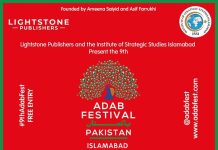Dilip Hiro, one of the leading experts on South Asia, in The Longest August narrates a detailed history of the partition of the subcontinent into the two states of India and Pakistan. Hiro plunges into a deep account of how the Indian sub-continent was carved and what followed later in a lucid narrative, which describes the bitter and antagonistic relationship between the two arch rivals – India and Pakistan. The book is divided into twenty chapters which give an extremely detailed account of history in a story telling technique which makes the book a comfortable read. Interestingly, the author narrates, with comfortable ease, the account of the partition, which he himself experienced as a young boy while migrating from Larkana to Bombay.
The author delves into the details of the largest mass migration in history and how the communal bloodbath resulted in the death of millions of people. The book begins by narrating the eventful period prior to partition, explaining the pre-partition politics with great detail, while explaining the efforts of Mohammad Ali Jinnah and Mahatma Gandhi for Hindu-Muslim unity and self-rule in the Indian subcontinent. Although both Jinnah and Gandhi tried to aim for the self-determination of their people, yet each had a different approach to achieving the desired goals. Jinnah was a staunch constitutionalist, whereas Gandhi was inclined towards unconstitutional means, like civil disobedience.













